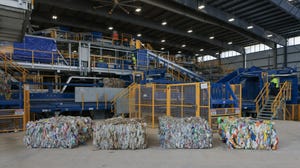Speaking Volumes: Fast Fashion Needs to Slow Down
My first experience at an H&M store remains a vivid memory. It was a bustling day at a shopping center in the heart of Ljubljana, Slovenia, nearly two decades ago. I was fresh out of high school, carrying my Motorola RAZR phone. Waiting on the other end was the world of fast fashion.

My first experience at an H&M store remains a vivid memory. It was a bustling day at a shopping center in the heart of Ljubljana, Slovenia, nearly two decades ago.
I was fresh out of high school, carrying my Motorola RAZR phone. After more than a decade of wearing a uniform, including the standard itchy polyester/cotton plaid pleated skirt and white blouse combo, I was ready to step into my own style.
The chattering of shoppers as they excitedly shuffled through the racks, discussing what they should purchase, hummed in the background as I indulged in what I considered high-quality European fashion. From basic t-shirts in a dozen colors to dresses for every occasion, the merchandise around me felt like an overly ambitious restaurant menu from an episode of Kitchen Nightmares.
While searching for the perfect outfit, I inadvertently entered the fast fashion world—an industry where styles change faster than the seasons, and the environmental impact of textile waste is overshadowed by affordability and trendsetting.
Allied Market Research indicates the fast fashion industry was valued at $103 billion in 2022 and is estimated to grow to $291.1 billion by 2032.
Products in this category are typically lower quality and, as a result, only last a few washes before being discarded. The most recent data from the U.S. Environmental Protection Agency (EPA) estimates that landfills in the United States received 11.3 million tons of textiles in 2018, the most recent data available.
Since fast fashion involves nearly every aspect of the economy (producers, sellers, distributors, consumers, and waste and recycling, ultimately) a holistic approach is necessary.
The Environmental Research & Education Foundation (EREF) has funded research into textile recycling, and its data could speak to this fast-fashion trend. Their data show that textiles are complex, and no one solution for textile-to-textile recycling currently exists. That means scientific research and technological development are vital for advancing textile recycling.
Chemical recycling breaks down textiles into their base molecules and reconstructs high-quality fibers, while improved fiber sorting technologies optimize the quality of recycled textiles. During the initial phase of designing and developing textiles, producers could focus on quality throughout the recycling and rebuilding processes, including:
Enhancements in mechanical recycling methods and biotechnological approaches using enzymes for fiber breakdown offer eco-friendly alternatives;
Closed-loop processes that maximize material recovery and reuse are crucial, requiring a comprehensive understanding of textiles' lifecycle and optimization of each step to minimize waste; and
Evaluating energy requirements, environmental impact, economic viability, and scalability are all essential for implementing these solutions in the textile industry.
In addition, the consumer market is multifaceted with the emergence of social media influencers, which could be used to encourage more environmentally responsible purchasing.
Influencers, like those on TikTok, could even play a significant role in promoting sustainable fashion and new business models rather than fast fashion. Fashion hauls could also focus on second-hand items, clothing swaps, or rental services rather than new, disposable items. Consumers should also think about buying less and choosing well, as well as caring for and repairing the clothes consumers already have.
The tools and data available today make a holistic approach to solving fast fashion's environmental impact more achievable. Twenty years ago, the practice of direct-to-consumer ads sent through a smartphone—much less a Motorola RAZR—was in its infancy. Retailers have the power to educate consumers rather than push short-term trends that wind up in landfills for the long term.
In turn, consumers can speak volumes through their purchasing habits, such as shopping for secondhand items and clothing from companies that value materials throughout their lifecycle.
Editor's Note: About 85 percent of textile waste in the United States goes to landfill or incineration, with a fraction of a percent ending up in the textile recycling supply chain. TRASHION is an innovative fashion show held at WasteExpo each year that explores the art of reusing textiles to transform fast fashion into a more sustainable concept. TRASHION is presented by EREF, Waste360, Dress for Success Southern Nevada, and New Orleans Fashion Week. Learn more here.
About the Author(s)
You May Also Like




